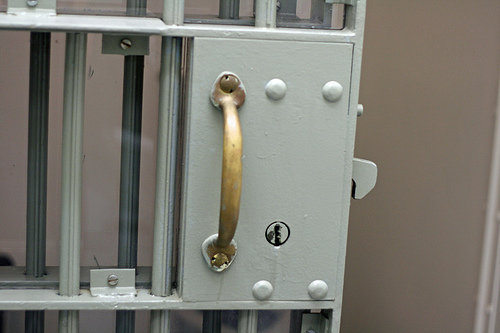The majority of American youth behind bars have suffered trauma during their childhoods, a newly released report by the Justice Policy Institute  (JPI) says. According to Healing Invisible Wounds: Why Investing in Trauma-Informed Care for Children Makes Sense, of the more than 93,000 children currently incarcerated, between 75 and 93 percent have experienced at least one traumatic experience, including sexual abuse, war, community violence, neglect and maltreatment.
(JPI) says. According to Healing Invisible Wounds: Why Investing in Trauma-Informed Care for Children Makes Sense, of the more than 93,000 children currently incarcerated, between 75 and 93 percent have experienced at least one traumatic experience, including sexual abuse, war, community violence, neglect and maltreatment.
“Incarcerated youth already face significant challenges, but youth who have experienced trauma are even more acutely affected,” says author Dr. Erica Adams. The brief, published by the Washington, D.C.-based organization that promotes the reduction of the nation’s prison population, notes that youth who engage in delinquent behavior should be held accountable but also strongly suggests that judges consider trauma exposure when deciding where youth are placed. Young people who receive treatment in the community tend to have better outcomes than those placed in correctional facilities, the report says.
“We simply cannot afford to ignore the evidence and prevalence of the long-term effects of untreated childhood trauma,” says JPI Executive Director Tracy Velázquez. “If we are to have strong healthy communities, then we must start with these children whose unseen and untreated wounds hinder their ability to become healthy, productive adults.”
JPI researchers say youth who suffer trauma are more likely to develop lifelong psychiatric conditions, including personality disorders, conduct disorder, ADHD, depression, anxiety, substance abuse disorders and posttraumatic stress disorder (PTSD).
They are also more likely, they say, to have learning disabilities and lower IQ levels along with, in many instances, school dropout and expulsion rates nearly three times higher than their peers who had not experienced trauma.
The report’s many suggested changes include more in-depth investigations into a child’s living conditions conducted by trained professionals, specialized treatment referrals for traumatized youth and their families along with an increase in trauma prevention programs funded on the state level.

Pingback: US jails will become death traps in the coronavirus pandemic | Coronavirus – Bail Watcher